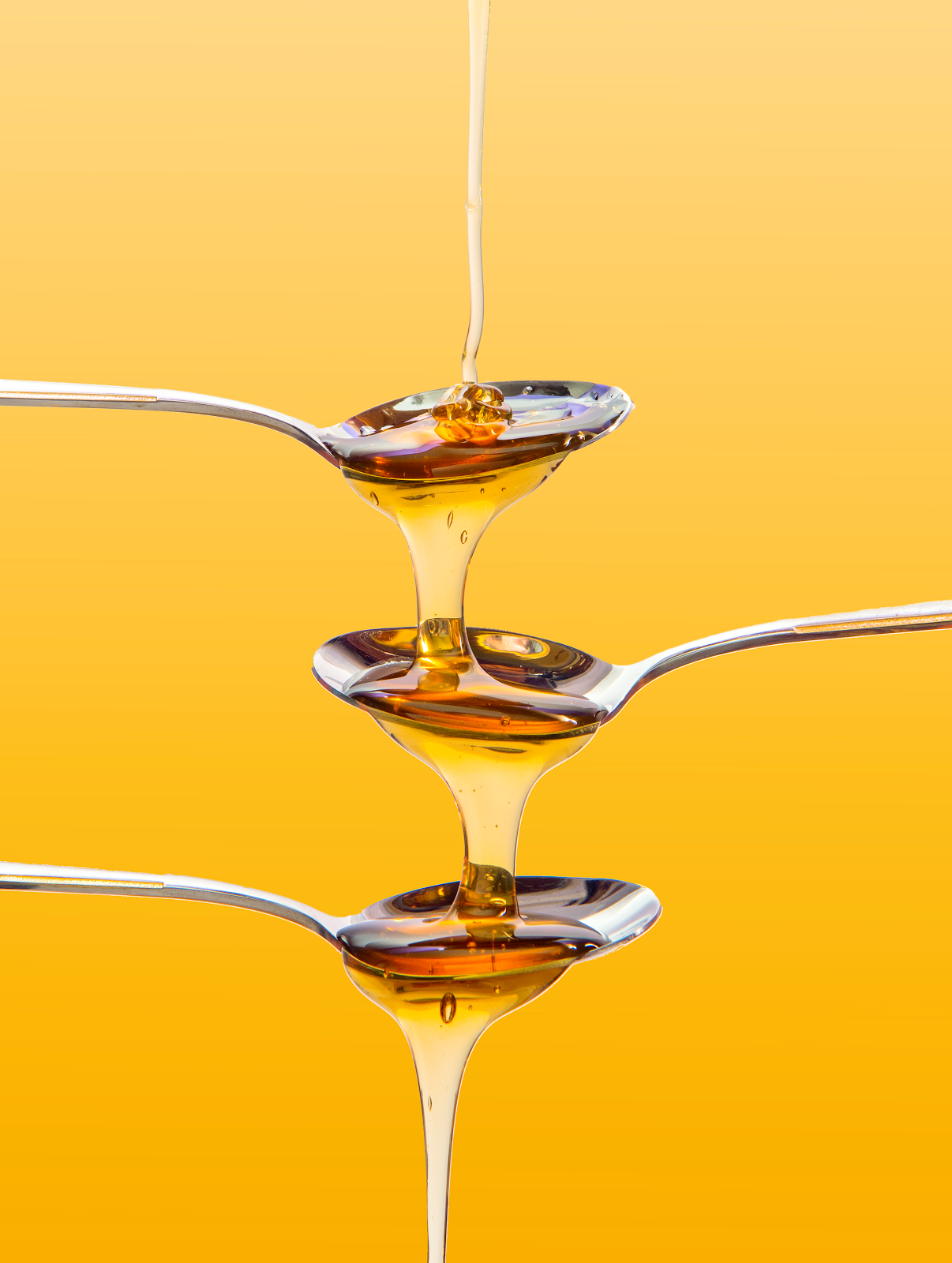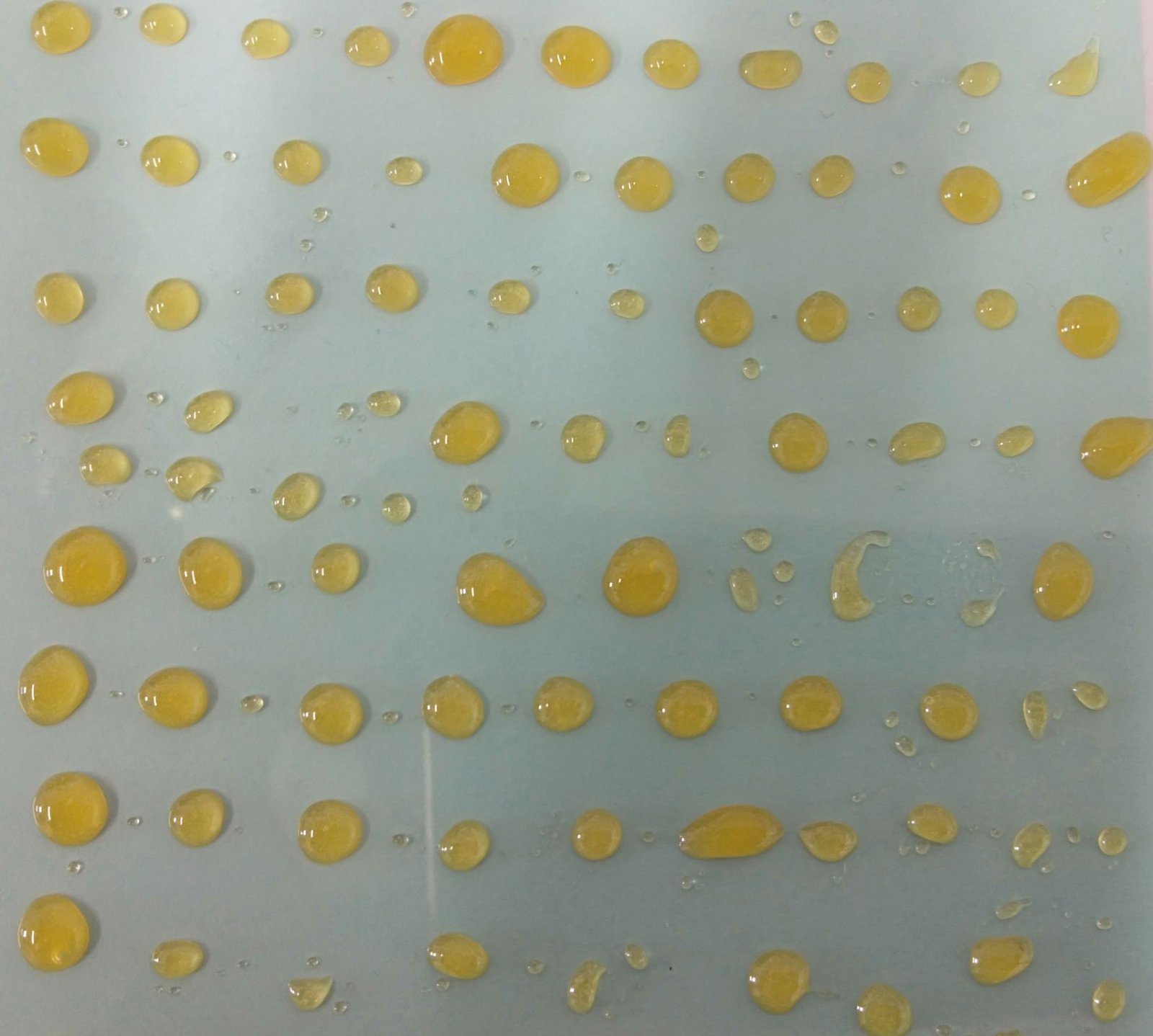Technical
Specification Sheet: Honey Conversion Table
1. Overview
This technical specification sheet provides a
comprehensive conversion table illustrating the relationship between the %
moisture, specific gravity, °Brix, and refractive index of honey at 20°C. The
moisture content or soluble solids in honey are typically determined by
measuring the refractive index using a refractometer.
2.
Importance
The refractive index of honey differs from
that of a sucrose solution at the same concentration, necessitating a unique
moisture chart for accurate determination. This table assists in correlating
these parameters to ensure precise measurement and quality control in honey
processing and analysis.
3.
Conversion Table
|
% Moisture |
Specific gravity (20°C) |
°Brix at 20°C (refractometer 0 - 90 range) |
Refractive index at 20°C |
|
13 |
1.4525 |
85.66 |
1.5041 |
|
13.2 |
1.451 |
85.45 |
1.5035 |
|
13.4 |
1.4495 |
85.24 |
1.503 |
|
13.6 |
1.4481 |
85.03 |
1.5025 |
|
13.8 |
1.4466 |
84.82 |
1.502 |
|
14 |
1.4453 |
84.61 |
1.5015 |
|
14.2 |
1.4438 |
84.39 |
1.501 |
|
14.4 |
1.4428 |
84.18 |
1.5005 |
|
14.6 |
1.4409 |
83.97 |
1.5 |
|
14.8 |
1.4395 |
83.76 |
1.4995 |
|
15 |
1.4381 |
83.55 |
1.499 |
|
15.2 |
1.4367 |
83.34 |
1.4985 |
|
15.4 |
1.4352 |
83.13 |
1.498 |
|
15.6 |
1.4338 |
82.92 |
1.4975 |
|
15.8 |
1.4324 |
82.71 |
1.497 |
|
16 |
1.431 |
82.5 |
1.4965 |
|
16.2 |
1.4295 |
82.29 |
1.496 |
|
16.4 |
1.4282 |
82.08 |
1.4955 |
|
16.6 |
1.4267 |
81.87 |
1.495 |
|
16.8 |
1.4254 |
81.66 |
1.4945 |
|
17 |
1.4239 |
81.45 |
1.494 |
|
17.2 |
1.4225 |
81.25 |
1.4935 |
|
17.4 |
1.4212 |
81.04 |
1.493 |
|
17.6 |
1.4197 |
80.83 |
1.4925 |
|
17.8 |
1.4184 |
80.63 |
1.492 |
|
18 |
1.4171 |
80.42 |
1.4915 |
|
18.2 |
1.4156 |
80.21 |
1.491 |
|
18.4 |
1.4143 |
80.01 |
1.4905 |
|
18.6 |
1.4129 |
79.8 |
1.49 |
|
18.8 |
1.4115 |
79.59 |
1.4895 |
|
19 |
1.4101 |
79.39 |
1.489 |
|
19.2 |
1.4087 |
79.18 |
1.4885 |
|
19.4 |
1.4074 |
78.97 |
1.488 |
|
19.6 |
1.406 |
78.77 |
1.4876 |
|
19.8 |
1.4046 |
78.56 |
1.4871 |
|
20 |
1.4033 |
78.35 |
1.4866 |
|
20.2 |
1.402 |
78.15 |
1.4862 |
|
20.4 |
1.4006 |
77.94 |
1.4858 |
|
20.6 |
1.3992 |
77.74 |
1.4853 |
|
20.8 |
1.3979 |
77.53 |
1.4849 |
Ref: Data from the table complied
by H.D. Chetaway. National Research Laboratories - Ottawa. Temperature
corrections are as follows: Specific Gravity = .0006 per °C or .00033 per °F;
°Brix value = .09 per ° C or .05 per ° F; Refractive Index =
.00023 per °C or .00013 per °F. If the temperature is above 20°C, add the
correction; if it is below 20°C subtract the correction
4. Detailed
Descriptions
% Moisture:
- Indicates the percentage of water content in honey.
- A critical parameter for assessing the quality and preservation of
honey.
Specific Gravity (20°C):
- The ratio of the density of honey to the density of water at 20°C.
- Used to determine the concentration of soluble solids in honey.
°Brix at 20°C:
- Represents the sugar content of an aqueous solution.
- Measured using a refractometer, °Brix indicates the percentage of
dissolved solids in honey.
Refractive Index at 20°C:
- A measure of how much light is bent, or refracted, when entering
the honey solution.
- This parameter helps in identifying the concentration of soluble
solids and moisture content.
5.
Measurement Procedure
- Sample Preparation:
- Ensure the honey sample is at a uniform temperature of 20°C.
- If necessary, warm the honey slightly to reduce viscosity and
achieve a homogenous sample.
- Using a Refractometer:
- Calibrate the refractometer according to the manufacturer’s
instructions.
- Place a drop of honey on the refractometer prism.
- Close the prism cover and allow the sample to spread evenly across
the surface.
- Read the refractive index directly from the refractometer scale.
- Interpreting Results:
- Use the refractive index obtained from the refractometer to find
the corresponding °Brix value from the table.
- Match the °Brix value to the specific gravity and % moisture content for precise analysis.
6.
Application
This conversion table is essential for:
- Quality control in honey production.
- Ensuring compliance with food safety standards.
- Research and development in food science.
- Accurate labeling and marketing of honey products.
7.
References
- The values in this table are derived from standard measurements and
may vary slightly based on specific conditions and honey varieties.
- For further details, refer to industry guidelines and refractometer
manufacturer manuals.
8. Notes
- Ensure all measurements are conducted at the specified temperature
(20°C) for accuracy.
- Regular calibration and maintenance of refractometers are crucial
for reliable results.
By following this technical specification, users can accurately determine the quality parameters of honey, ensuring consistency and compliance with industry standards.







.jpeg)

